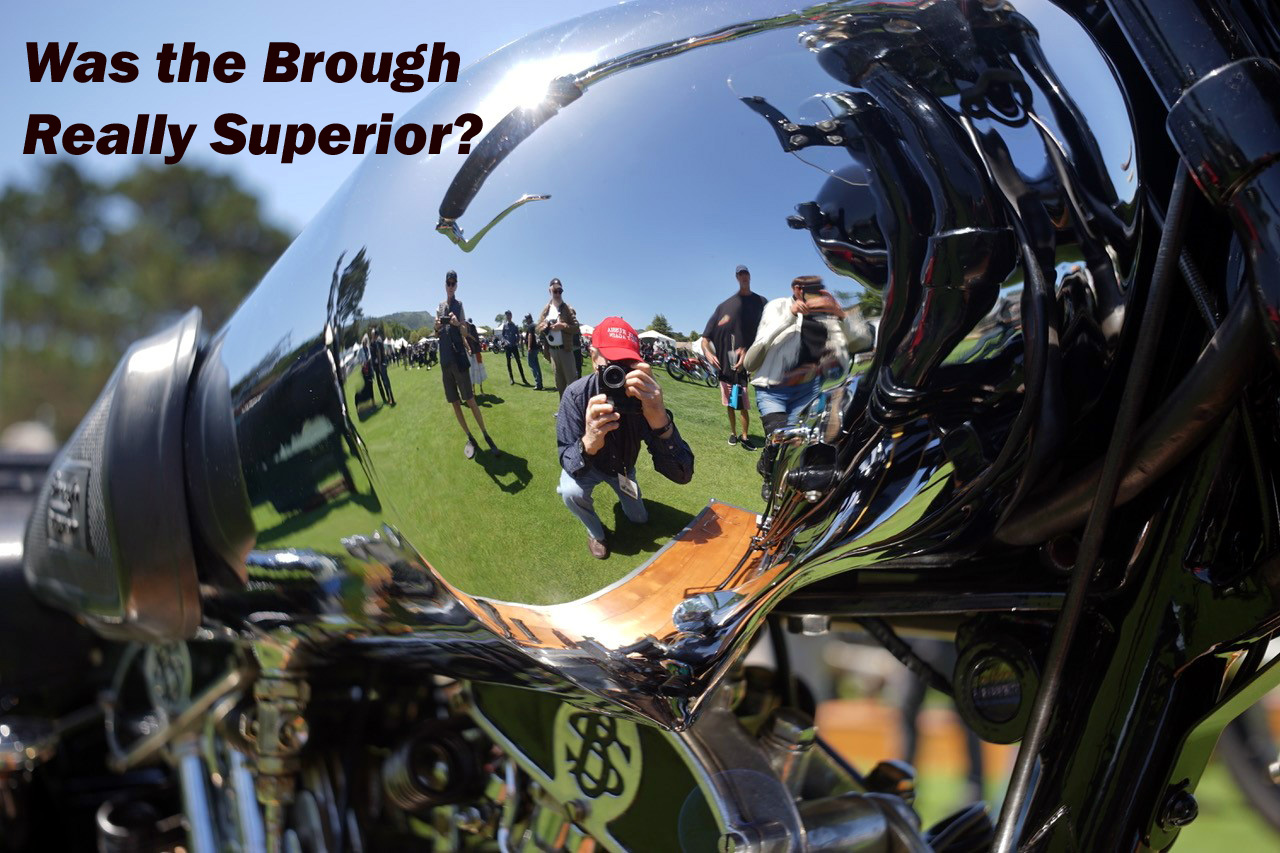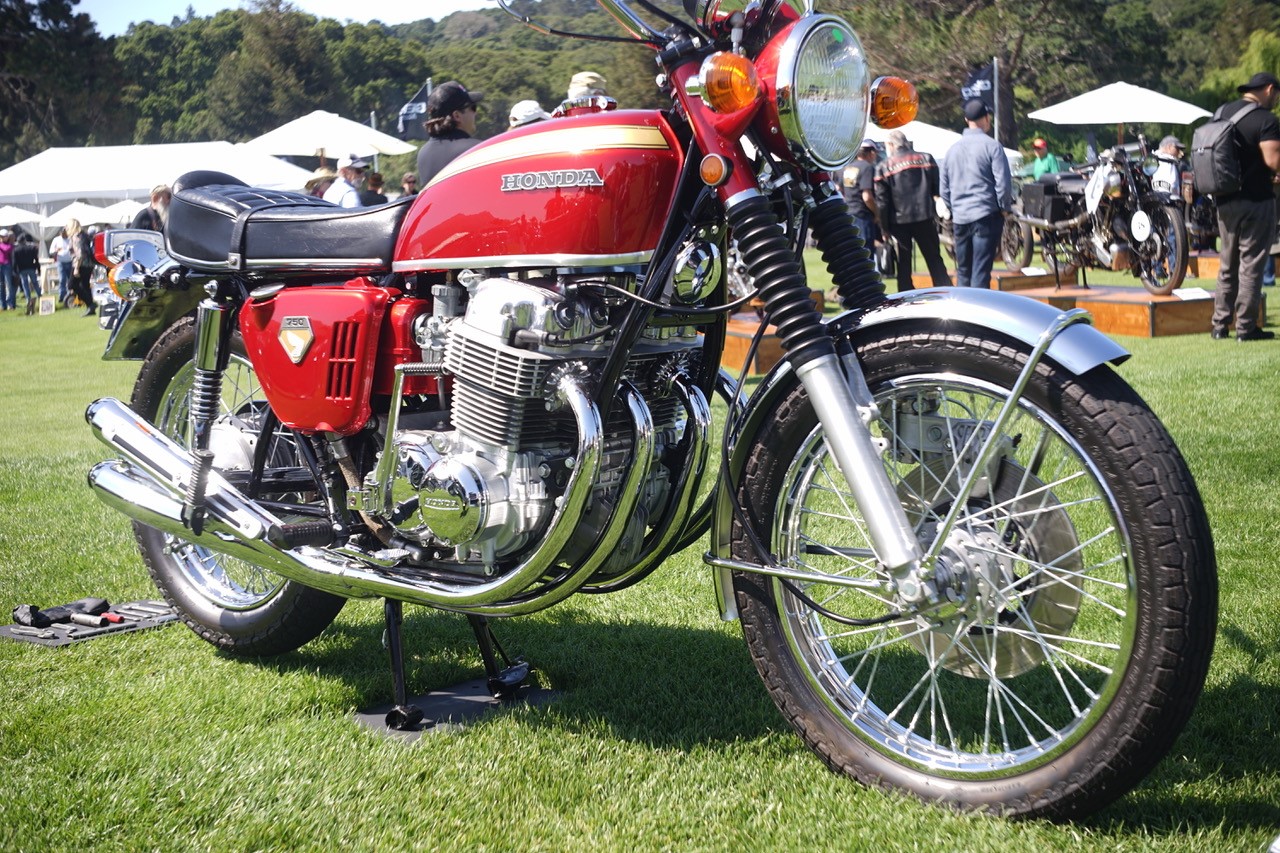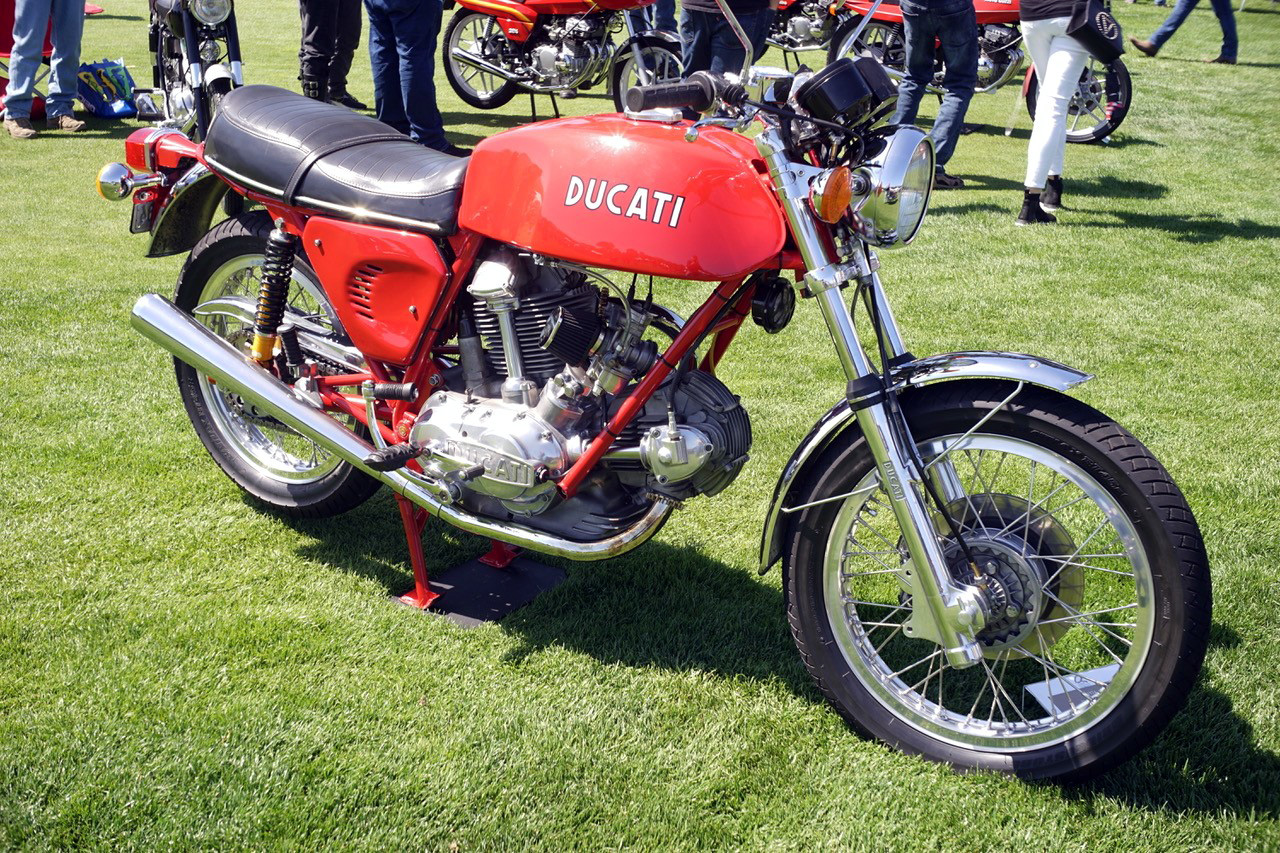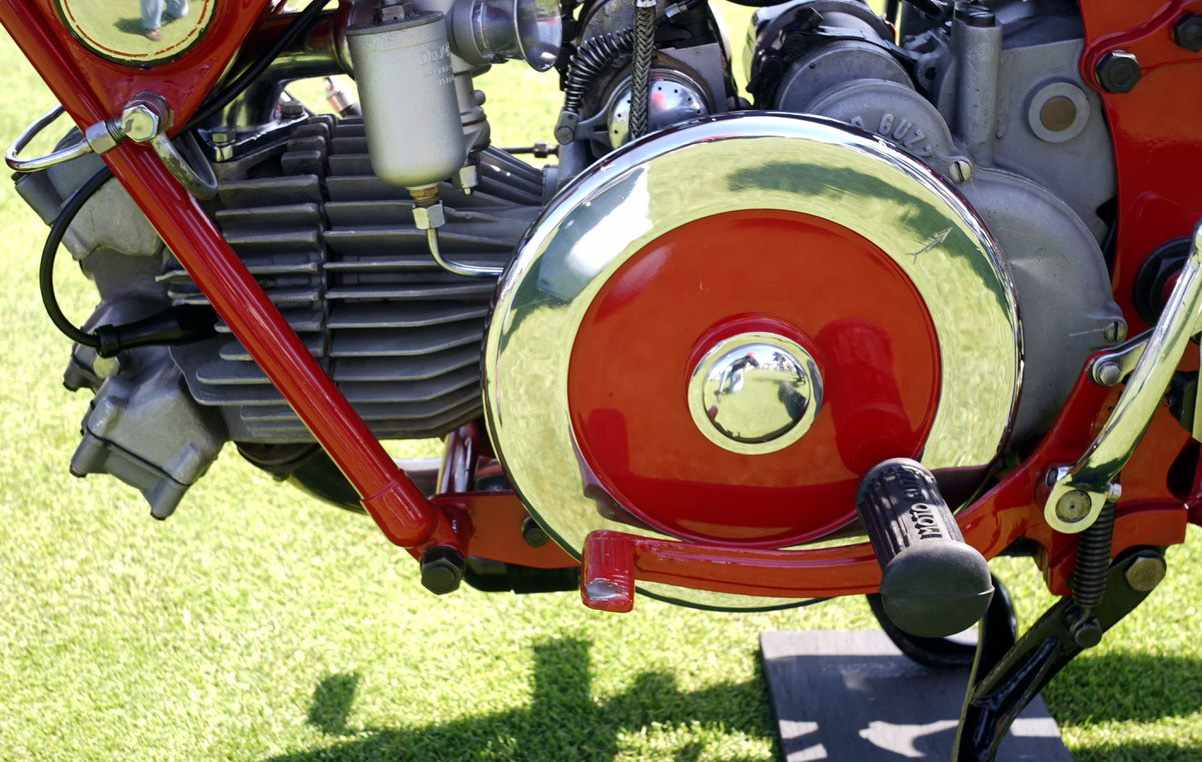Story by Brandes Elitch
Photos by Steve Snyder
The 11th annual edition of the Quail Motorcycle Gathering was held on May 4 on the grounds of the luxury resort Quail Lodge, in Carmel Valley, California, just east of the Carmel-Monterey peninsula. This event, created, curated, managed, and directed by local impresario Gordon McCall, must be the premier motorcycle concours in the country, if not the world.
As our readers know, Gordon also presents the automobile concours at the same venue during the Friday of the Monterey Historics in August. I would imagine that it must take an entire year to plan, organize, and execute on both shows.
I have attended the previous ten events, as well as the three iterations of the predecessor event, from 2006-8, called The Legend of the Motorcycle, organized by Jared Zaugg and Brooke Roner, and held at the Ritz-Carlton hotel at Half Moon Bay, CA. Jared and Brooke deserve full marks for this idea. It was a great show, but the venue had very constricted access (as befits a hotel of this stature), which, combined with the near-freezing weather (being literally right on the beach of the Pacific Ocean) caused issues.
Gordon also gets full marks for recognizing the power and importance of this idea, and for having the vision and stamina to carry on and move it to a more suitable show field, Quail Lodge. This is more convenient for the entrants and spectators, without the risk of hypothermia.
Pete Vack’s vision for VeloceToday is to showcase French and Italian vehicles, but I am going to deviate a bit in this column to discuss the world of motorcycle collecting in general, and suggest a few jumping-off points for our readers who may not be familiar with the subject.
The first point of reference is two movies about motorcycling. The first is “On Any Sunday,” a 1971 documentary about motorcycle sport, directed by Bruce Brown. It is an iconic movie, nominated for a 1972 Academy Award for best documentary feature film. It is credited as the most important documentary about motorcycles ever made. Critic Roger Ebert said that it did for motorcycle racing what the movie “The Endless Summer” did for surfing. The movie features Malcom Smith, who was honored by Gordon on the podium at the show, and presented with the most prestigious award from the American Motorcycling Association’s President, The Dud Perkins Lifetime Achievement Award.
The second movie is “Why We Ride,” a 2013 documentary directed by Bryan Carroll. It is about the passion of the riders and the soul of their machines, told by famous motorcyclists Kenny Roberts, Mert Lawwill, and Alonzo Bodden. Mert was also on the podium with Gordon and Malcom, and spoke a bit about his career. The movie uses state of the art photography to show the passion of motorcycle riding between friends and family, racers, pioneers, and generations of riders. Watching these two movies would be a good introduction to riding.
The second point of reference is the person I consider the Dean of American Motorcycle Writers, Peter Egan. I will get right to the point and say that the highlight of the day for me was meeting Peter in person, and having him autograph his latest book for me, “The Best of Peter Egan, Four Decades of Motorcycle Tales and musings from the pages of Cycle World Magazine.” Of course, Peter has published other books, three in the “Leanings” series and “Side Glances, 1983-1992.” Writer Seth Richards says, “Egan is not only a great motorcycle writer, but a great regional writer, whose depiction of the rural Midwest and the winding landscape that passes beneath his wheels is imbued with transcendence and beauty: golden sunsets, autumn leaves dropping in slow motion, English parallel twins vibrating themselves into romantic oblivion.” Reading anything by Peter Egan would be a good introduction to the world of motorcycling. That is your homework assignment for this week.
The third point of reference would be to attend the Quail Motorcycle Gathering, because the presence of so many diverse bikes from so many manufacturers over so many years is a microcosm of the history of motorcycling. I don’t know where else you would be able to cover all that in just one day. I must admit that, while I have spent my life studying automobile design, I don’t know much about motorcycle design, but I can tell in an instant when I look at a bike if it looks right and meets my criteria for good design.
Here’s something else you should know: when you go to a show, you will see that many bikes have been customized to one degree or another. Some of the work was done for reasons of safety and reliability. But you will also see custom seats, forks, handlebars, tanks, frames, wheels; well, you get the picture. This would not be the case for car shows, except for custom and hot rod shows, but it is not unusual for a bike. As an example, I recently bought a Honda CX 650 because it was similar to my Guzzi V-50 (V-twin and shaft drive), but it is so ugly that I have to sneak up on the garage. I cannot help but think about how to make it more attractive (new seat and tank), even though I would never do this on a car. Of course, nobody is going to customize a Brough Superior or Norton Manx or Vincent Black Shadow, but I’ll bet some modifications were done back in the day.
Now let’s take a look at this year’s show and see what was on display. Two anniversaries were celebrated: One Hundred Years of the Brough Superior,” and “Fifty Years of the Honda CB 750.” Another feature was scramblers, titled “Off-Road Wonders Through the Nineties.” There was a celebration of women in motorcycling, as the event coincided with International Female Ride Day. Two were honored on the podium: Kayla Yaakov and Ginger Damon.
The Brough Superior was advertised as the “Rolls-Royce of Motorcycles,” after a comment in an early road test. The Rolls-Royce management objected to this, but after visiting the Brough factory, they were so impressed that they allowed this advertising to continue! As David Minton has written, it was the reliability of the bike that set it apart from its British peers, because Brough blueprinted each motor, engine balance, crankshaft assembly, valve timing, porting, pistons and bores, carburation, and ignition. This is one of the very most desirable bikes and of course one of the most valuable today.
The Honda CB 750 is often called “The First Modern Superbike,” and justifiably so. To quote from the program: “The world motorcycle community was stunned in 1969 that it was possible to offer this level of sophistication – 4 cylinders, SOHC, a disc brake, and electric start, and a 123 mph top speed, at a price of only $1495.” More than 400,000 would be built over ten years. What is not commonly known is that Honda adopted the statistical process controls of American W. Edwards Deming, including a 2000 hour vehicle test life. This meant that Hondas did not break down, fail to start, leak oil, lose their electric; pretty revolutionary in 1969.
I should also compliment the Master of Ceremonies, Paul D’Orleans. I sold Paul my Velocette MAC after a ten year restoration, and I have followed and recommend his website, www.thevintagent.com, which contains a wealth of information about motorcycling history.
Thank you to Gordon McCall and all the people who helped put this show together. Everything went like clockwork, and even though there were about 3000 people in attendance, it never felt crowded. I wonder that they have in store for next year?












Great show, presenters super friendly and gregarious. Good food too! The spectators bike parking also a great show!
Absolutely the finest words and photography I’ve seen on the very best of the Events held at the Quail.
Greatest thanks for your extraordinary efforts!!
Kirk F. White